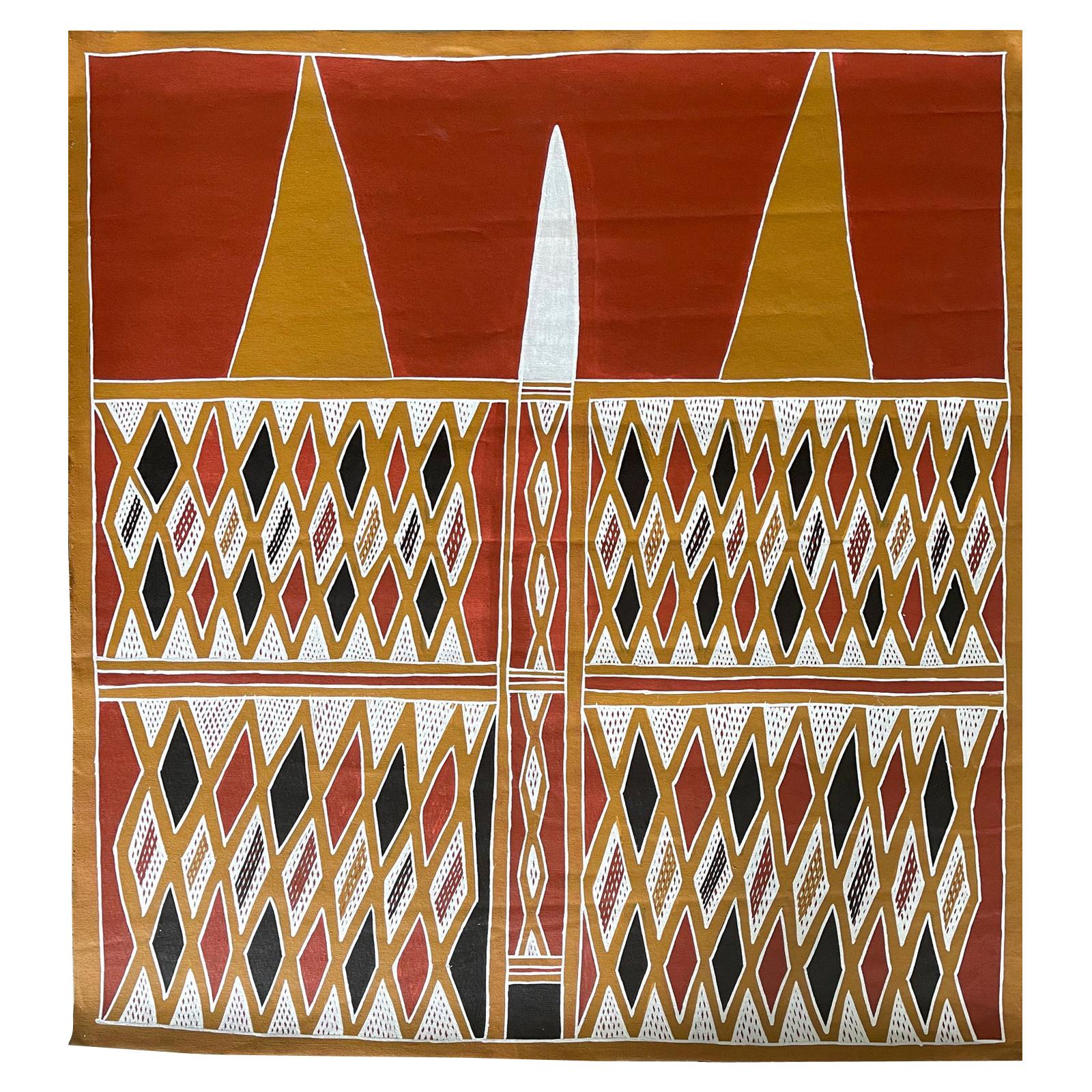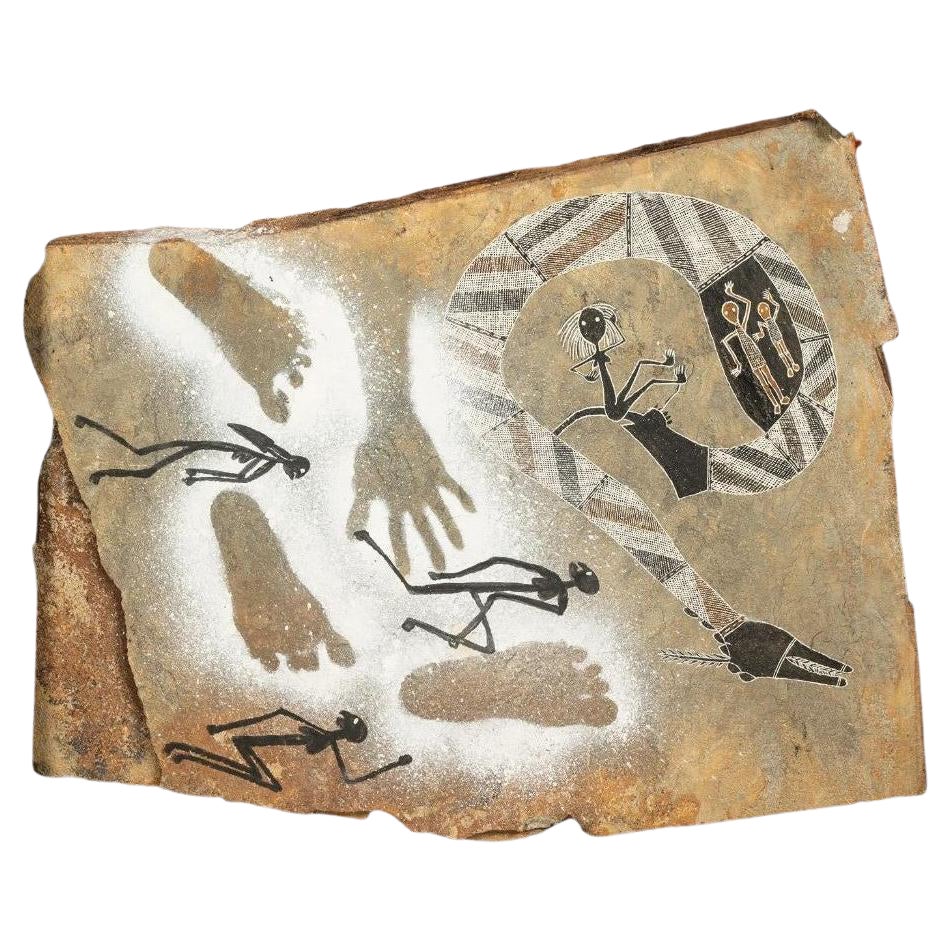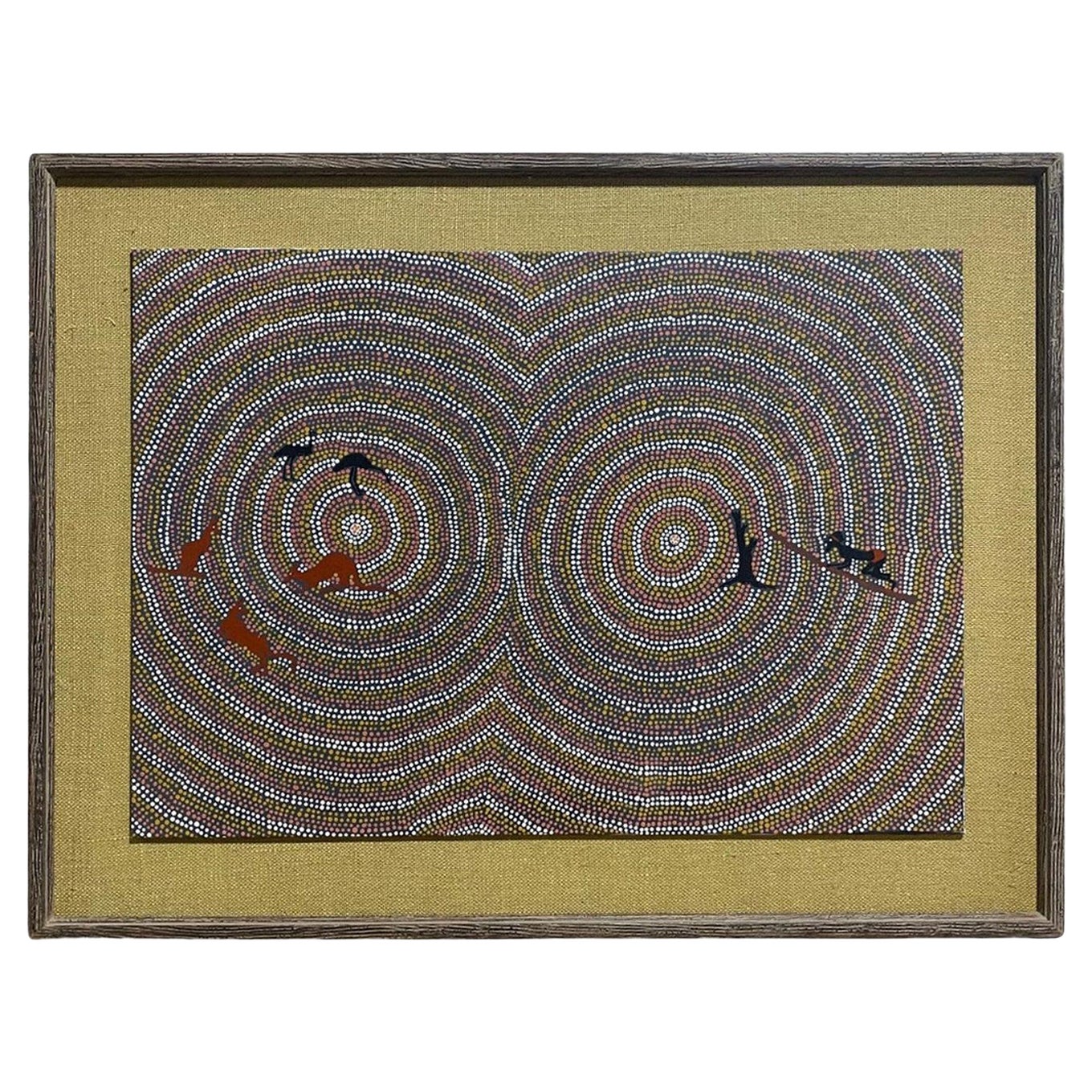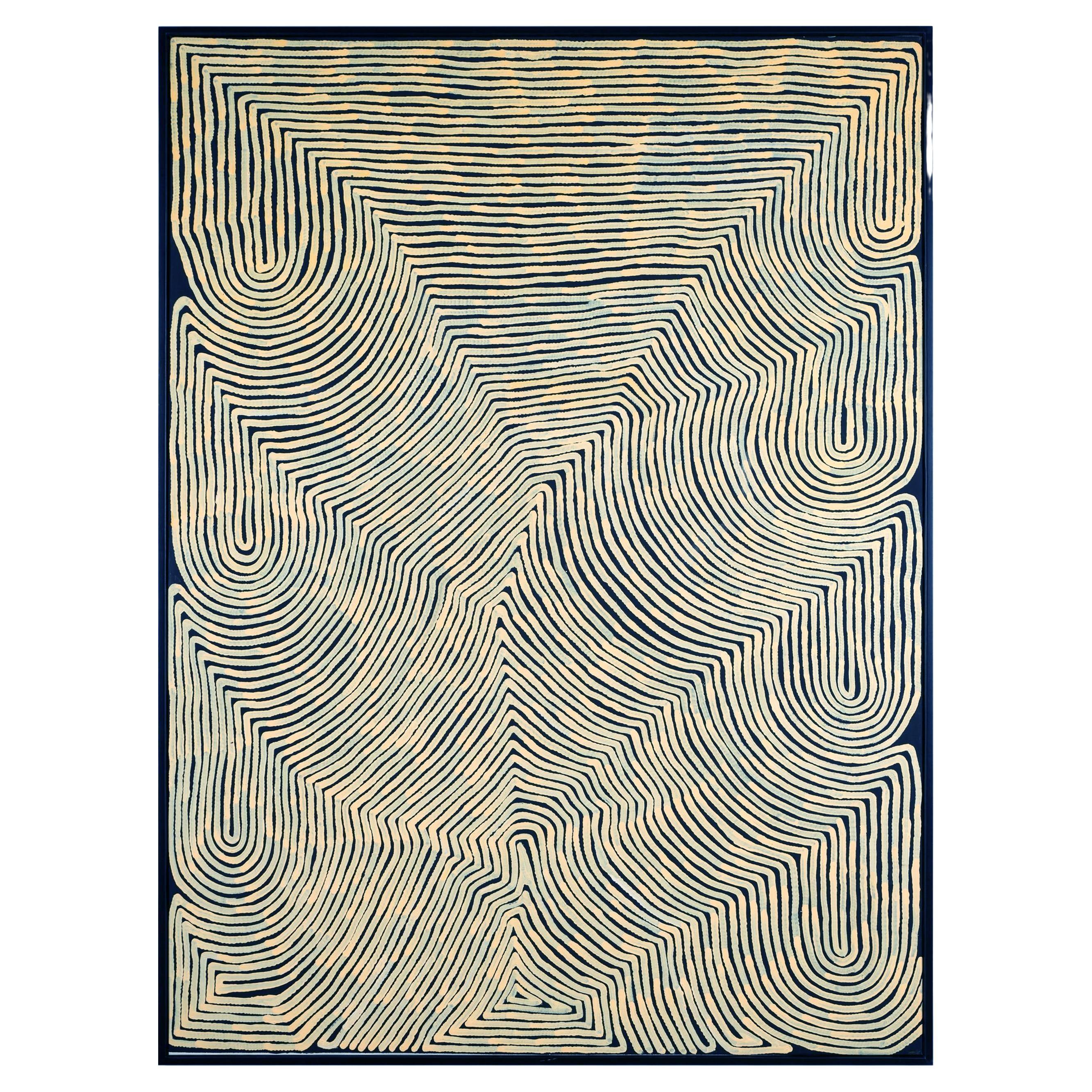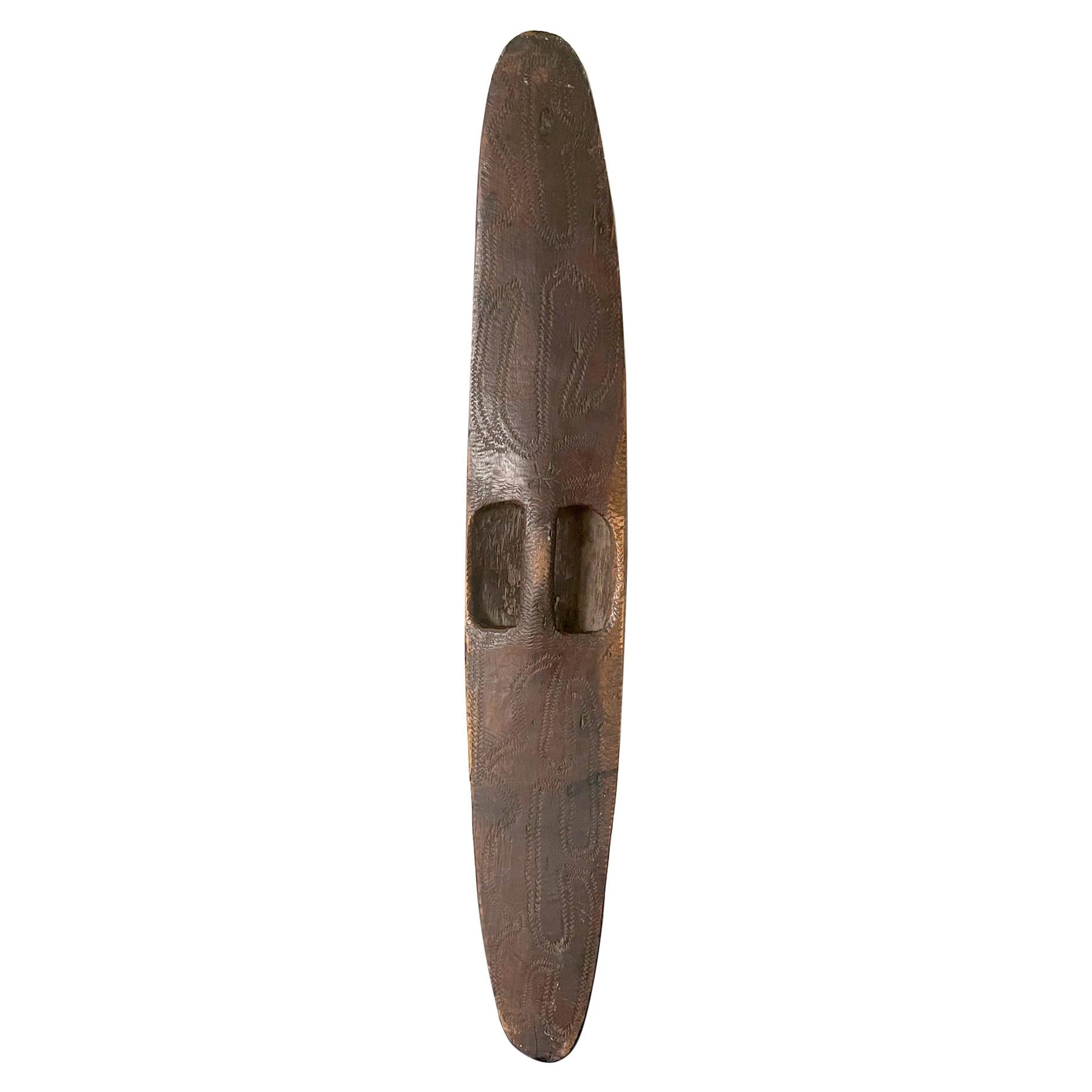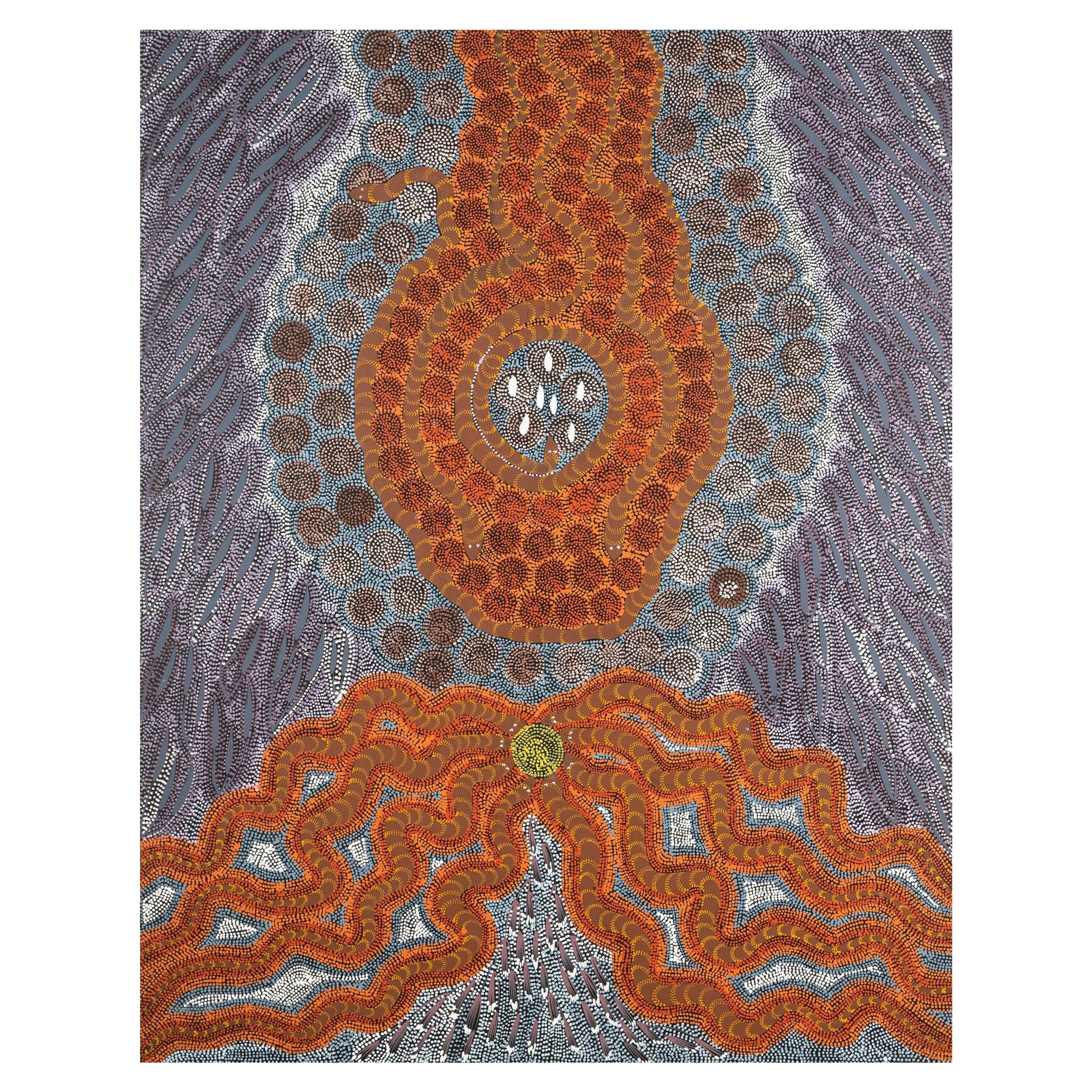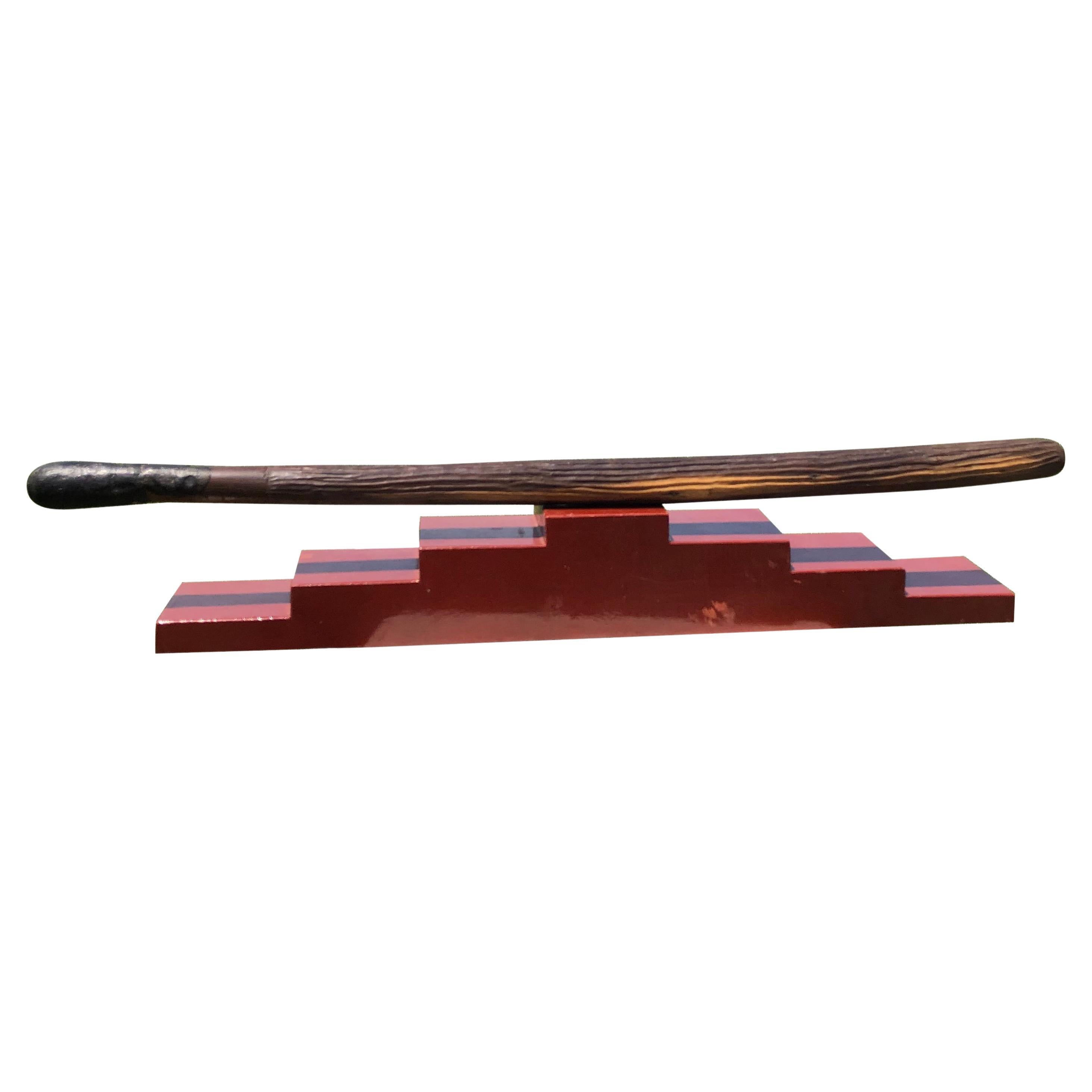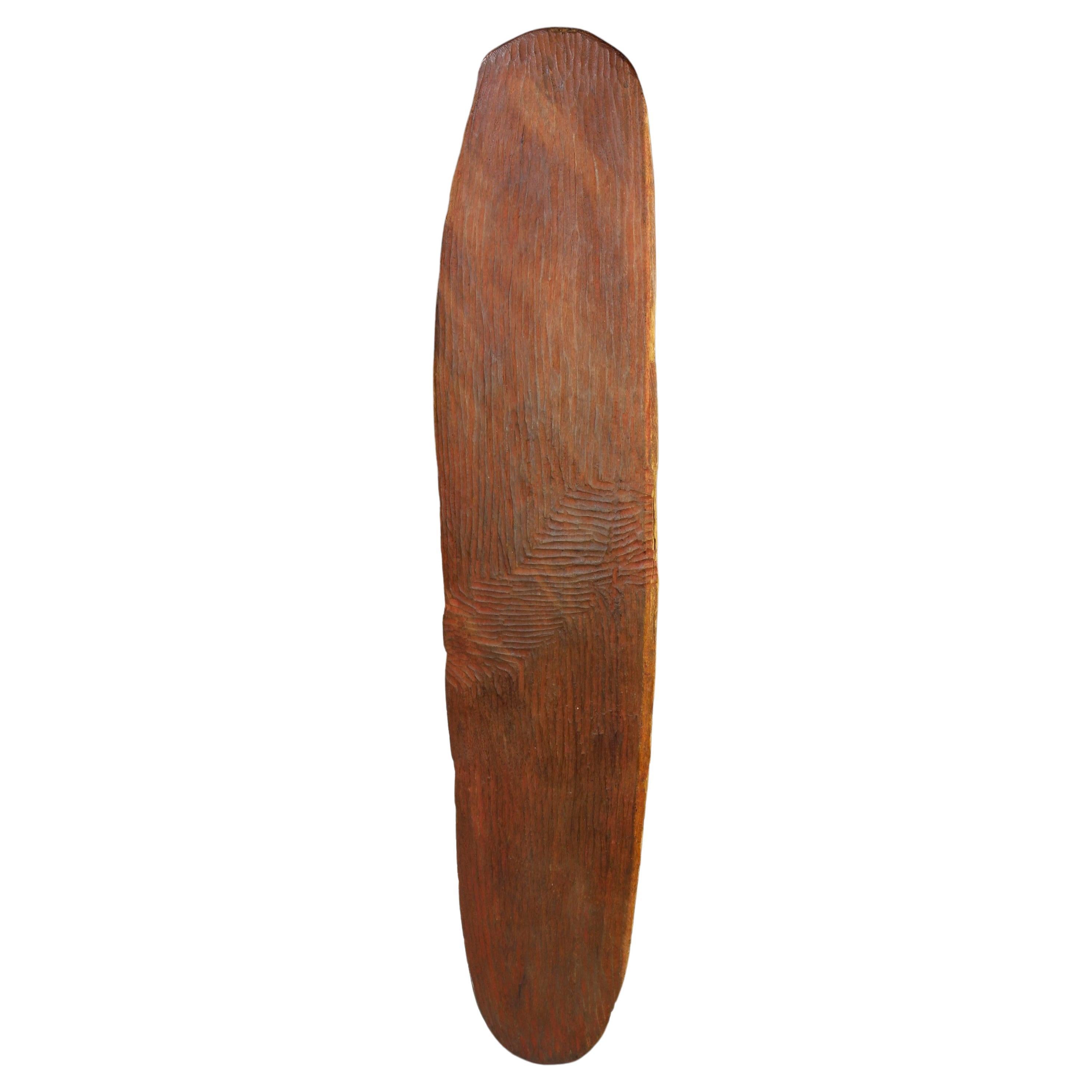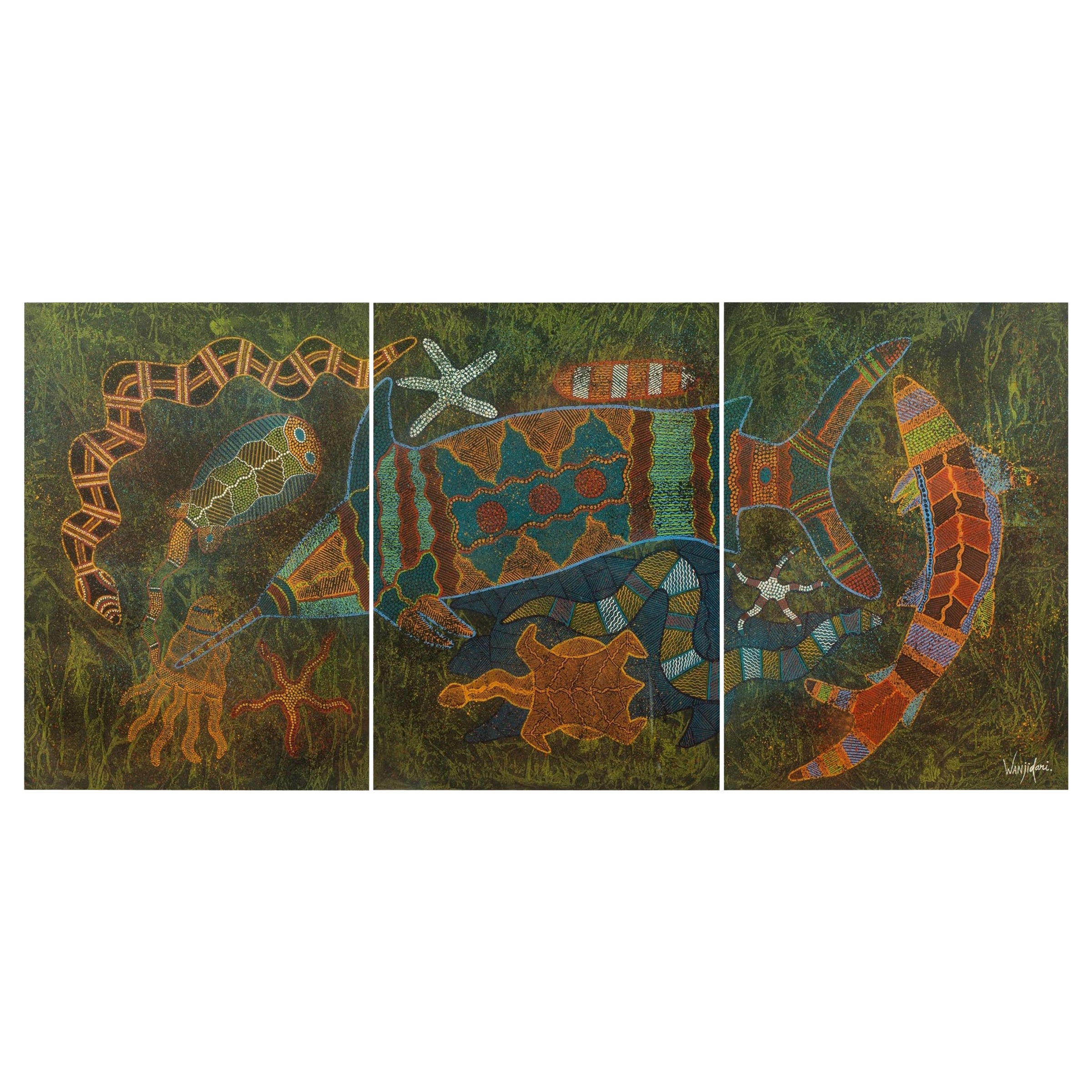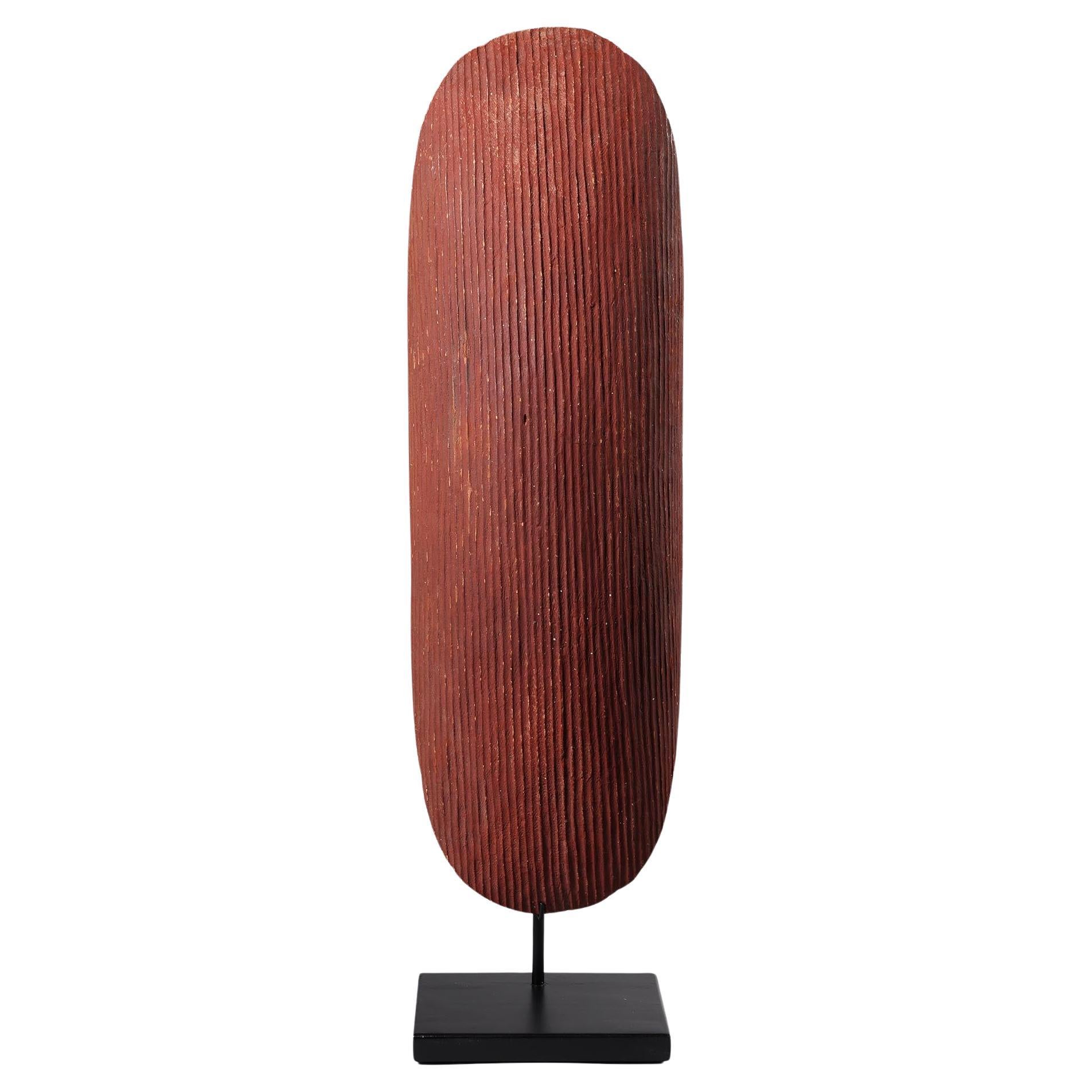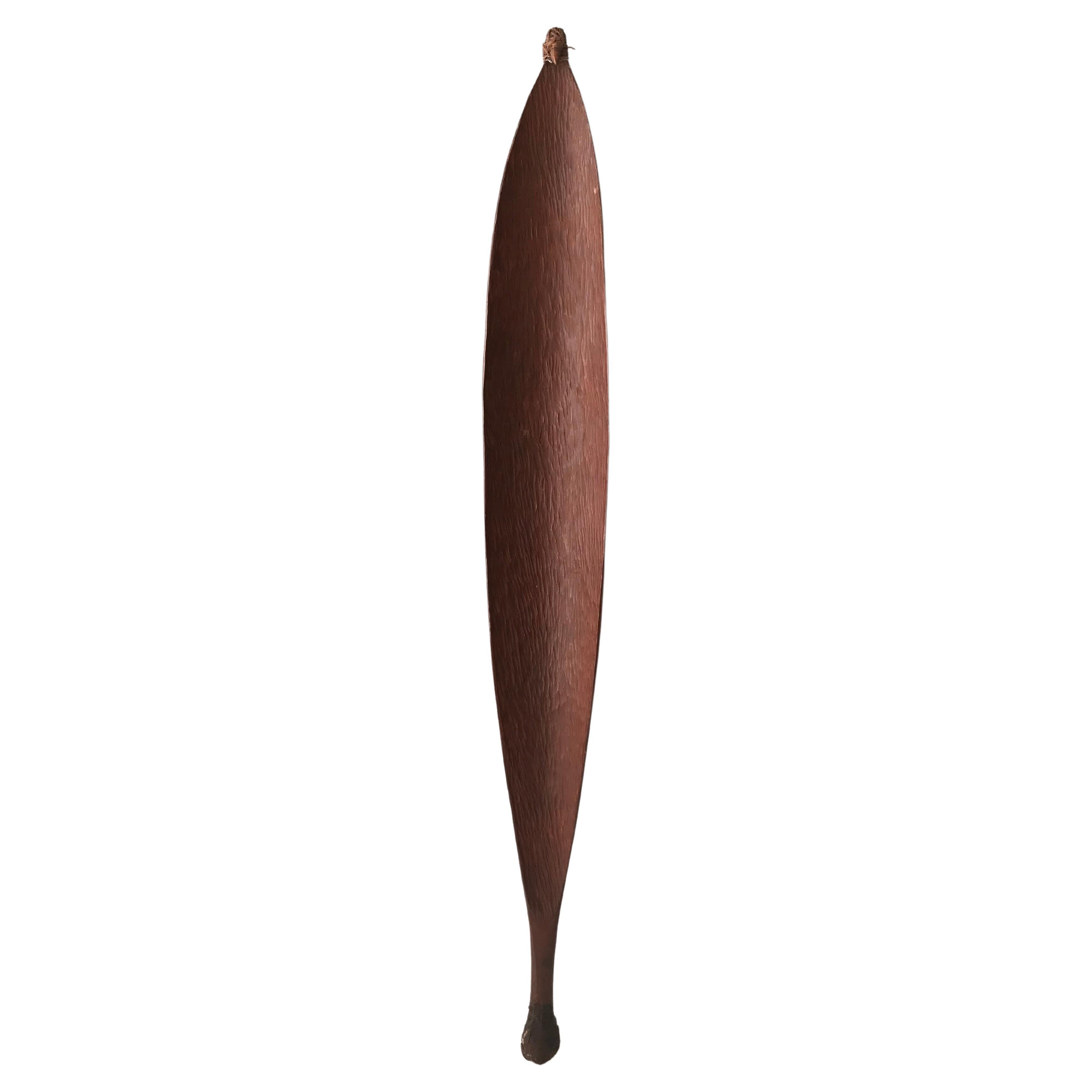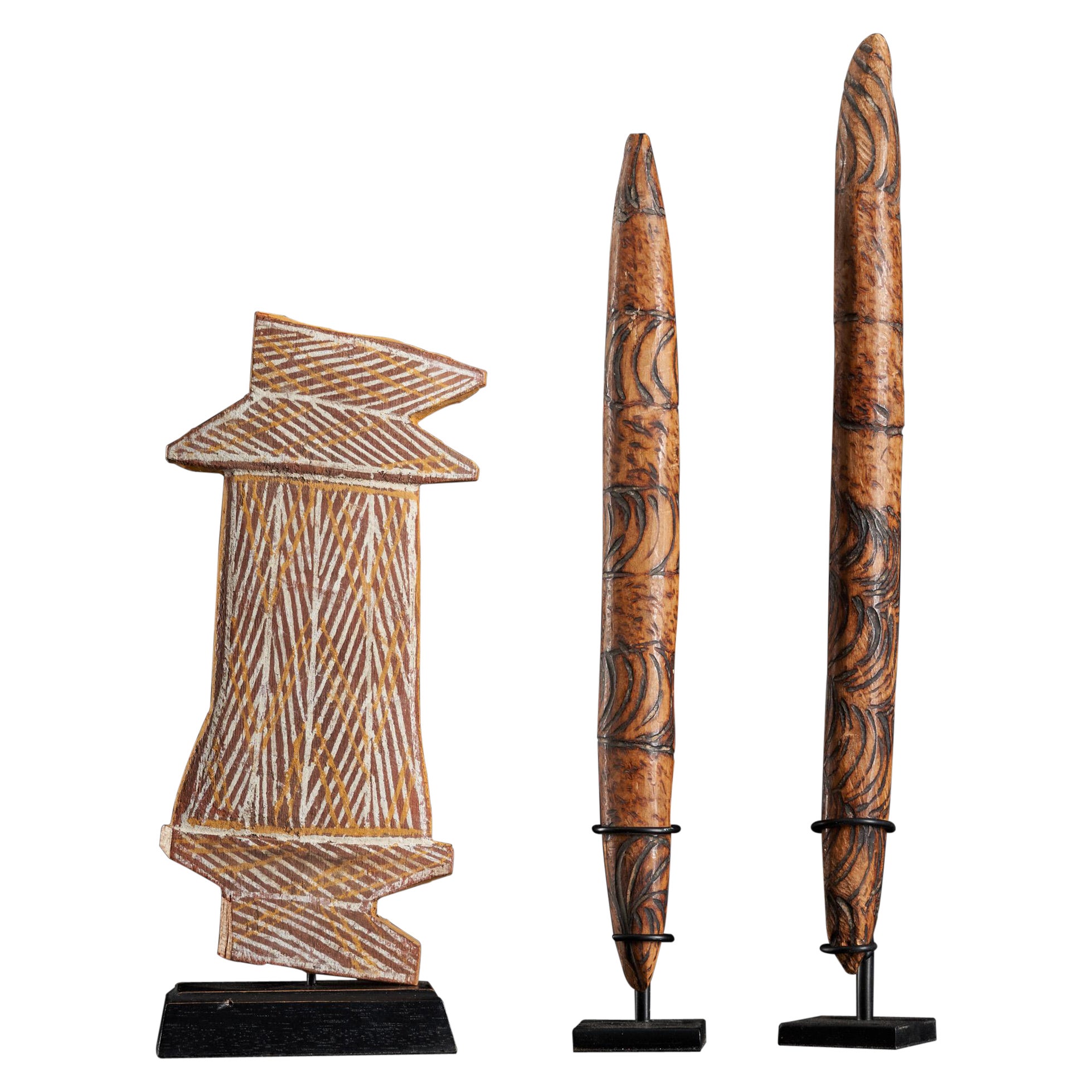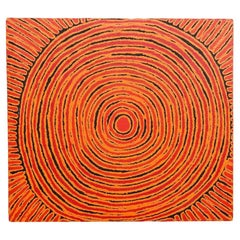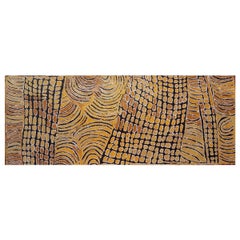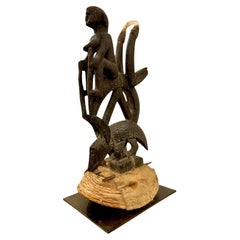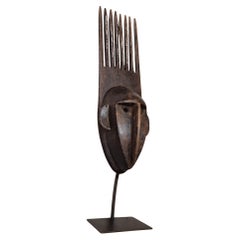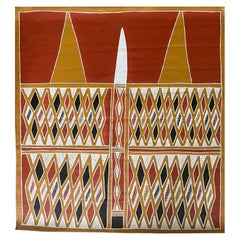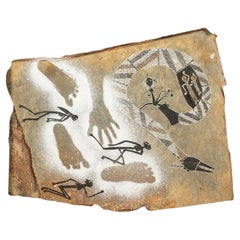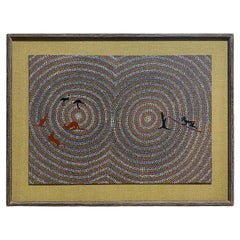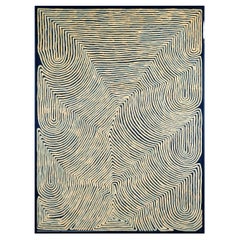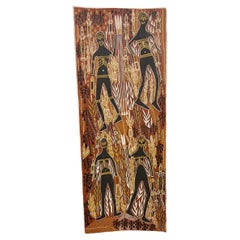
Aboriginal Bark Painting by Betty Guymatala, Australia
View Similar Items
Want more images or videos?
Request additional images or videos from the seller
1 of 6
Aboriginal Bark Painting by Betty Guymatala, Australia
Price:$3,237.78
About the Item
- Dimensions:Height: 55.91 in (142 cm)Width: 22.05 in (56 cm)Depth: 0.2 in (5 mm)
- Style:Tribal (Of the Period)
- Materials and Techniques:
- Place of Origin:
- Period:
- Date of Manufacture:20th Century
- Condition:
- Seller Location:NICE, FR
- Reference Number:1stDibs: LU9202238930842
About the Seller
5.0
Gold Seller
Premium sellers maintaining a 4.3+ rating and 24-hour response times
Established in 2003
1stDibs seller since 2023
28 sales on 1stDibs
Typical response time: 5 hours
Authenticity Guarantee
In the unlikely event there’s an issue with an item’s authenticity, contact us within 1 year for a full refund. DetailsMoney-Back Guarantee
If your item is not as described, is damaged in transit, or does not arrive, contact us within 7 days for a full refund. Details24-Hour Cancellation
You have a 24-hour grace period in which to reconsider your purchase, with no questions asked.Vetted Professional Sellers
Our world-class sellers must adhere to strict standards for service and quality, maintaining the integrity of our listings.Price-Match Guarantee
If you find that a seller listed the same item for a lower price elsewhere, we’ll match it.Trusted Global Delivery
Our best-in-class carrier network provides specialized shipping options worldwide, including custom delivery.More From This Seller
View AllAboriginal Painting 'Ngutjul' by Pantjiya Nungurrayi (1936-)
Located in NICE, FR
In this extraordinary painting, Pantjiya Nungurrayi celebrates, using a three-colour palette, the sites for which she holds ritual guardianship. In this instance, she portrays Ngutju...
Category
21st Century and Contemporary Australian Tribal Paintings
Materials
Canvas, Acrylic
Aboriginal Painting by Tjunkiya Napaltjarri (1927-2009)
Located in NICE, FR
We offer an exquisite Aboriginal artwork created by Tjunkiya Napaltjarri (1927-2009) in 2002, sourced from the Papunya Tula Art Center. Her work can be found in the collections of th...
Category
21st Century and Contemporary Australian Tribal Paintings
Materials
Acrylic
Ciwara Bambara headdress in carved wood and basketry, Mali, Early 20th century
Located in NICE, FR
A very pleasing Ciwara crest, singularly small and accompanied by its original headdress, depicting a stylized antelope leaning on a pangolin. The antelope is ridden by a woman, and white horsehair has been added to the tips of the horns. The piece is carefully sculpted, with notches decorating the bodies of the antelope and the pangolin.
Rattan, plant fiber, cowries, wood Very fine velvety mat patina, Circa 1950
An animal called Ciwara is said to have taught the Bambara how to cultivate the land, and during agrarian ceremonies, they recall the myth through the stylized representation of an antelope whose name ci wara...
Category
Early 20th Century Malian Tribal Tribal Art
Materials
Wood
Bamana N'tomo mask, Mali, 20th century
Located in NICE, FR
Bamana N'tomo mask, Mali, 20th century
"Generally surmounted by three to eight horns forming a comb, the N'tomoface mask refers to a moment of compulsory education given to uncircumcised young boys in certain West African societies. The mask's discreet, even absent, mouth emphasizes the behavior expected of them in their future adult life after training: controlling and measuring their words, knowing how to keep quiet, preserving secrets and enduring pain in silence."
Excerpt from Masques du N'tomo, Marc Ladreit de Lacharrière Collection, Musée du Quai Branly Jacques Chirac, France.
The Bambara, or Bamana, live in central and southern Mali. Their name means “unbeliever” and was given to them by the Muslims. Animists, they believe in the existence of a creator god called Ngala, who maintains the order of the universe and coexists with another androgynous god called Faro, master of the Word, who gave all qualities to mankind and makes the fruits of the earth grow. Traditional Bamana art objects are closely linked to agrarian rites.
The Bamana dance these masks during initiation and circumcision ceremonies for young boys in the Ntomo society. The face, with its vertical outgrowths at the top, adopts geometric features beneath a rounded forehead, including an imposing busted nose, as the Bamana favor this organ in their statuary as it evokes sociability and clan cohesion. Indeed, during choreography, the dancer frequently touches the nose of the mask.
As teaching aids for candidates, masks from societies accessible to young boys and adults, such as the N'tomo, Korè and Ci wara...
Category
Vintage 1930s Malian Tribal Tribal Art
Materials
Wood
Ndoma Baule Portrait Mask, Ivory Coast, Wood, lacquered patina, Circa 1930
Located in NICE, FR
"Ndoma” Baule Portrait Mask, Ivory Coast, Circa 1930 Wood, heavy wood with deep brown-black lacquered patina.
A superb old hardwood dance mask featuring an ...
Category
Vintage 1930s Tribal Tribal Art
Materials
Wood
Collection of Kriss Handles, Java, Indonesia, Late 18th / Early 19th Century
Located in NICE, FR
A set of thirteen kriss handles originating from Java, Indonesia, dating from the late 18th to early 19th century.
Beautiful aged patina in dark or amber tones. Exquisite carving wo...
Category
Antique 1790s Indonesian Tribal Tribal Art
Materials
Wood
You May Also Like
Aboriginal Body Painting Terrence Gurruwiwi Elcho Island, Australia
Located in Atlanta, GA
Title: Gumatj Ceremonial chest paint
Medium: Acrylic on canvas
Size: 32" H x 28.5" W
Date created: November 2006
Artist: Terrence Gaypamany Gurruwiwi
Language: Glapu
Date of birth: 06/09/1984
The painting depicts the traditional body paint onto the chest during ceremonies of the local aboriginal communities. It is
signed by the artist on verso as shown and also retains a stamp from Elcho Island Art...
Category
Early 2000s Australian Tribal Paintings
Materials
Canvas
Australian Aboriginal Art Bobby Barrdjaray Nganjmirra Painting Rainbow Serpant
Located in Studio City, CA
A wonderful, unique, and very engaging original stone painting titled "Rainbow Serpent, Ngalyod" by prominent Australian Aboriginal artist Bobby Barrdjaray Nganjmirra (1915-1992). Th...
Category
Vintage 1970s Australian Tribal Paintings
Materials
Stone
Australian Aboriginal Art Barbara Charles Napaltjarri Hunting Dreaming Painting
Located in Studio City, CA
A wonderful, unique, and very engaging original acrylic on canvas painting titled "Hunting Dreaming" by indigenous Australian Aboriginal artist B...
Category
Vintage 1980s Australian Tribal Paintings
Materials
Canvas, Acrylic, Paint
Australian Aboriginal Painting Rain Dreaming Ronnie Tjampitjinpa
By Ronnie Tjampitjinpa
Located in Atlanta, GA
A contemporary painting by Australian Aboriginal artist Ronnie Tjampitjinpa (1943-). Entitled "Rain Dreaming", the artwork was acrylic on canvas and painted in 1999
Fully documented: originally purchased in 1999 from Kimberley Australian Aboriginal Art, Melbourne, cat. no. KA 708/99; The in the collection of The Kelton Foundation, Santa Monica; It was exhibited in: "G'Day LA" Australia Week, in partnership with the Australian Consulate Los Angeles, Pacific Design Center, West Hollywood, CA, 15-25 January 2004. It is housed in a black thin wood frame.
Ronnie Tjampitjinpa was born in Pintupi land at Muyinnga, about 100 kilometres west of the Kintore Range, just across the Western Australian border. He is the son of Uta Uta Tjangala’s older brother, Minpuru Tjangala (c.1899–1976).
Artist's Biography (Courtesy of Art Gallery NSW)
After his initiation into Pintupi law at the site of Yumari, Tjampitjinpa and his younger brother Smithy Zimran Tjampitjinpa walked into the Aboriginal community of Yuendumu. They later joined their parents and other siblings – who had come in to Ikuntji (Haasts Bluff) in 1956 from the Dover Hills/Yumari area – at the new settlement of Papunya. Tjampitjinpa worked as a labourer, assisting with the fencing of the aerodromes at Papunya and Ikuntji. He was one of the youngest of the group of men who began painting at the start of the Western Desert art movement in 1971, and was a founder of Paunya Tula Artists.
During the 1970s, Tjampitjinpa was preoccupied with returning to his traditional lands and became a strong advocate for the outstation movement, travelling between meetings in Papunya, Yuendumu, Wirrimanu (Balgo) and Mount Doreen Station. His goal was finally achieved with the establishment of the Walungurru (Kintore) settlement in 1981. Tjampitjinpa moved there with his young family in 1983, establishing an outstation at Ininti (Redbank) and serving as chairman of the Kintore Outstation Council. During this period, he emerged as one of Papunya Tula Artists’ major painters, pioneering the bold, scaled-up, linear style that came to dominate many of the Walungurru painters’ work during the 1990s. His distinctive aesthetic preoccupa-tion is exemplified in the untitled works of 1994 and 2001. Now one of the last founding members of Papunya Tula Artists, Tjampitjinpa’s career spans more than 40 years. He has had six solo exhibitions since 1989 in Australia, most recently at Utopia Art, Sydney.
Throughout the 1980s Tjampitjinpa worked devotedly on a land claim for Ininti, holding meetings in Darwin, Warmun (Turkey Creek...
Category
1990s Australian Modern Paintings
Materials
Canvas, Acrylic
Carved Wood Aboriginal Shield, Western Australia
Located in Atlanta, GA
A tall and narrow parrying shield from the Aboriginal people living in the Western Australia. The piece was carved out of a single block of hard wood t...
Category
Early 20th Century Australian Tribal Tribal Art
Materials
Wood
Australian Aboriginal Art Janet Forrester Ngala Painting Snake & Milky Way Dream
Located in Studio City, CA
A wonderful, unique, and quite engaging original painting titled "Snake And Milky Way Dreaming" by indigenous Australian Aboriginal artist Janet ...
Category
20th Century Australian Tribal Paintings
Materials
Canvas, Acrylic, Paint
